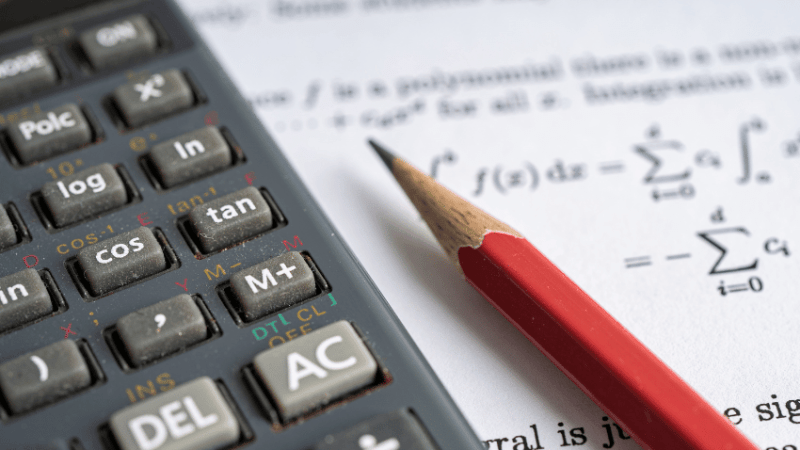Simultaneous equations questions – Top KS3/4 worksheets & lessons
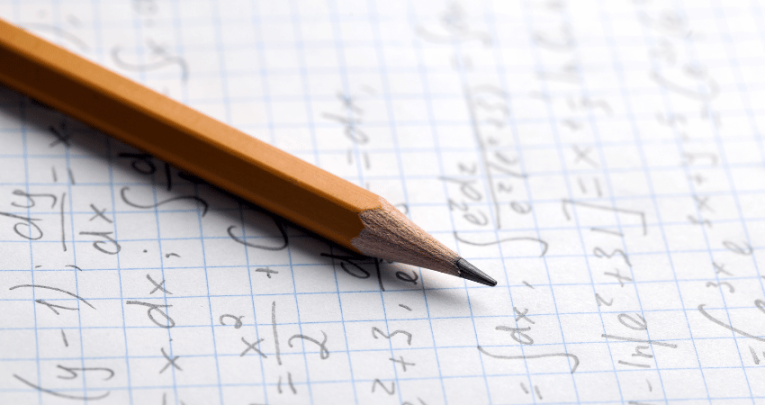
Dive into our ultimate resource hub for simultaneous equations questions, from exam practice to quadratic, linear, and graphical problems…

- by Teachwire
- Classroom expertise and free resources for teachers
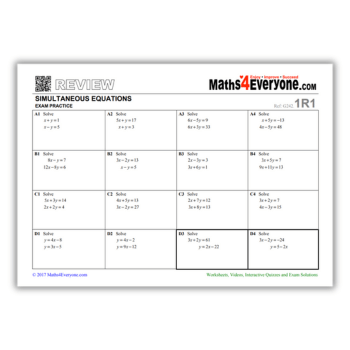
Welcome to our diverse collection of free simultaneous equations questions, worksheets and lesson plans.
There are exam questions and resources for quadratic equations, linear equations and graphical methods, for both KS3 and GCSE.
Simultaneous equations exam questions
GCSE 9-1 exam question practice
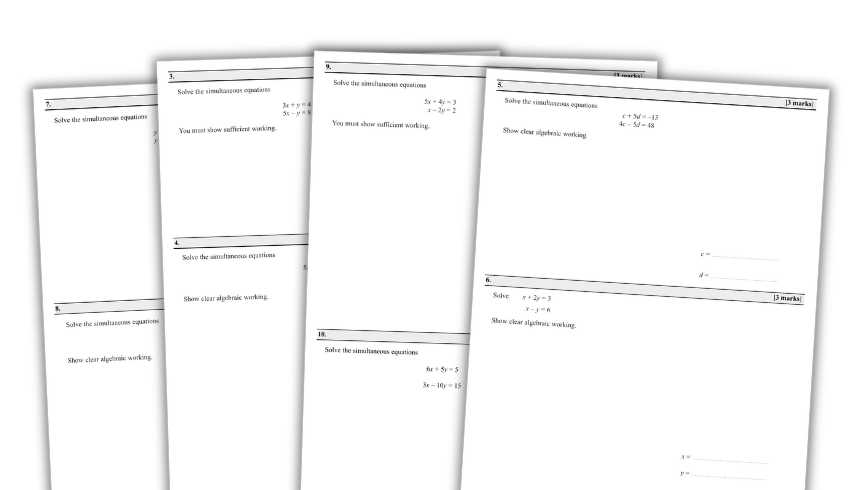
This carefully selected free compilation of exam questions has fully-worked solutions designed for students to go through at home, saving valuable time in class.
Simultaneous equations GCSE topic review
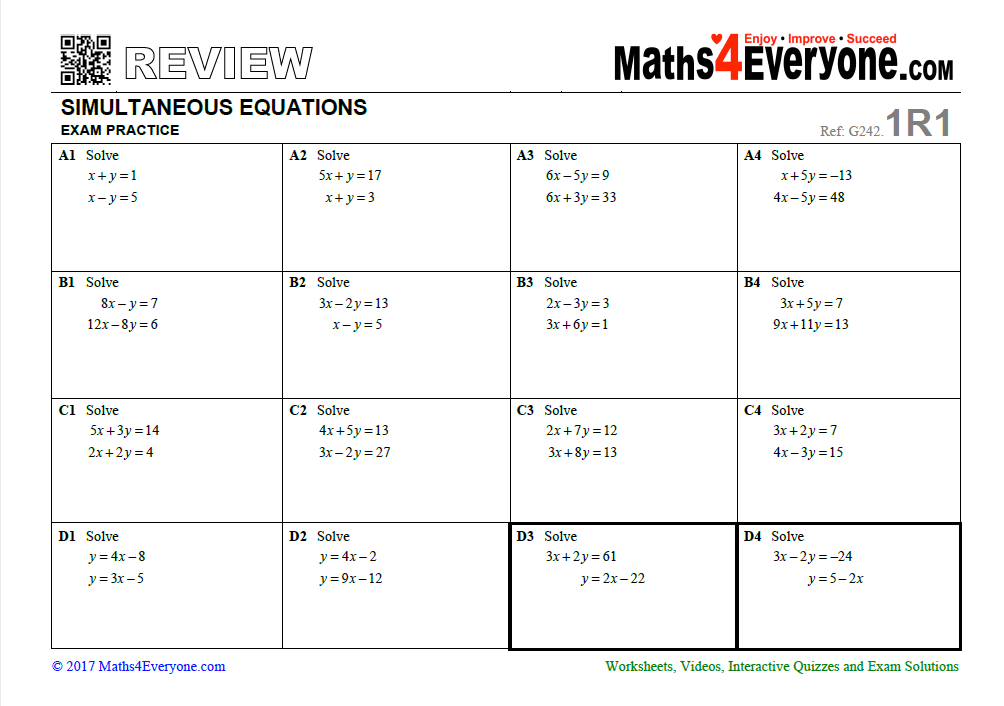
Ideal for students who are revising simultaneous equations, these free revision sheets have exam-type questions which gradually increase in difficulty. The last questions have an extra twist.
Quadratic simultaneous equations GCSE 9-1 exam question practice
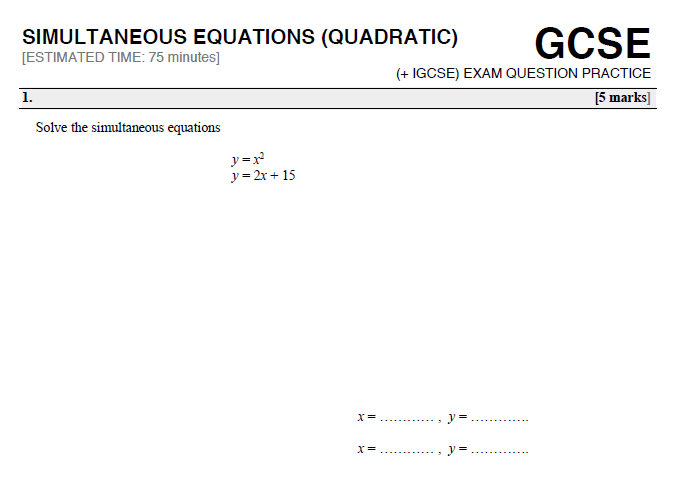
This free compilation of exam questions focuses on quadratic equations and has fully-worked solutions designed for students to go through at home.
More GCSE simultaneous equations questions
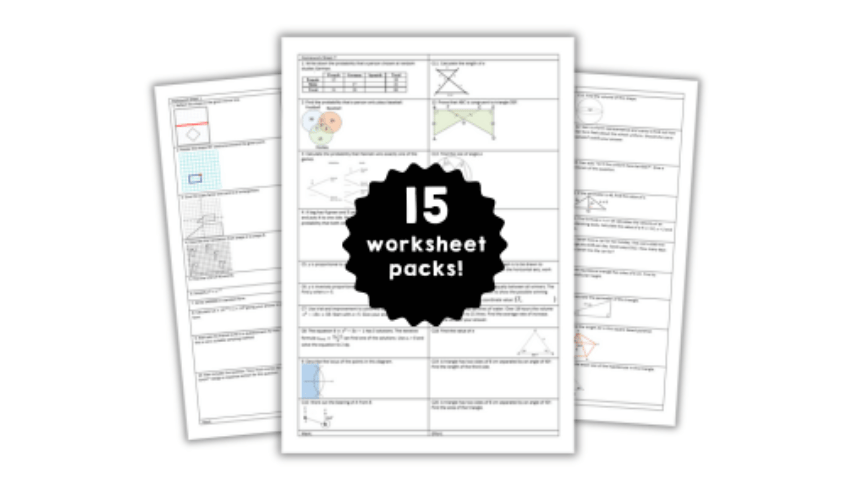
This free GCSE maths worksheet collection covers the following topics, among many others:
- graphical simultaneous equations
- non-linear simultaneous equations & circle equations
- simultaneous equation problems
Free GCSE worksheet
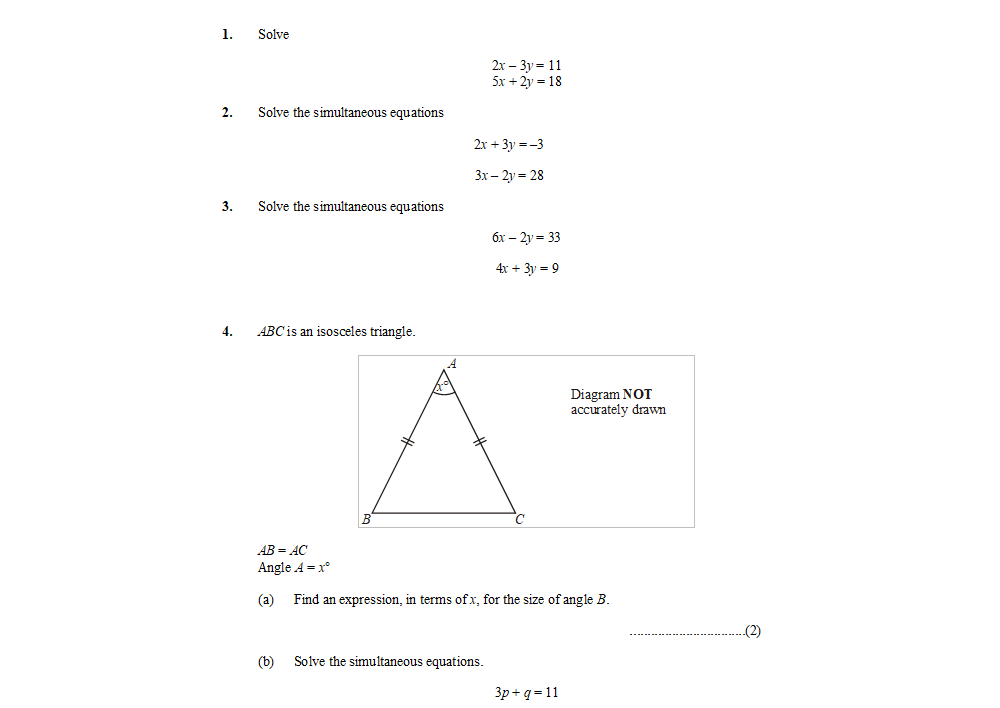
This free worksheet features GCSE questions for simultaneous equations, and comes with an answer sheet.
KS4 elimination method PowerPoint
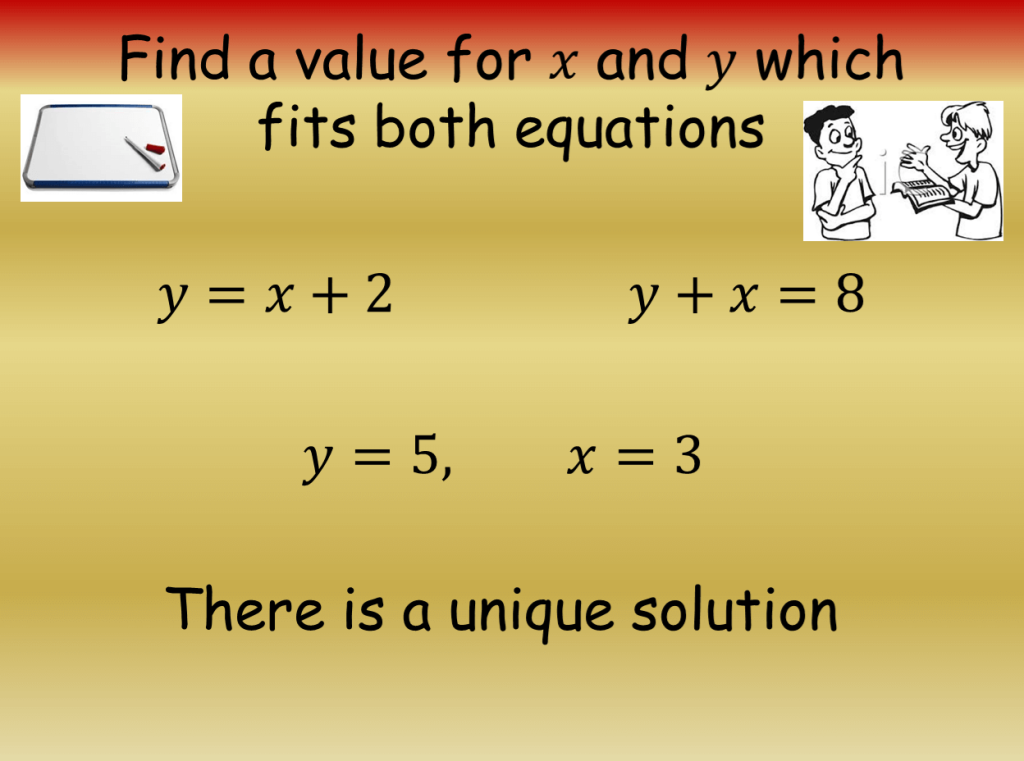
This free PowerPoint for simultaneous equations is specifically for the elimination method, but also briefly covers the substitution method.
Simultaneous equations KS4 worksheet
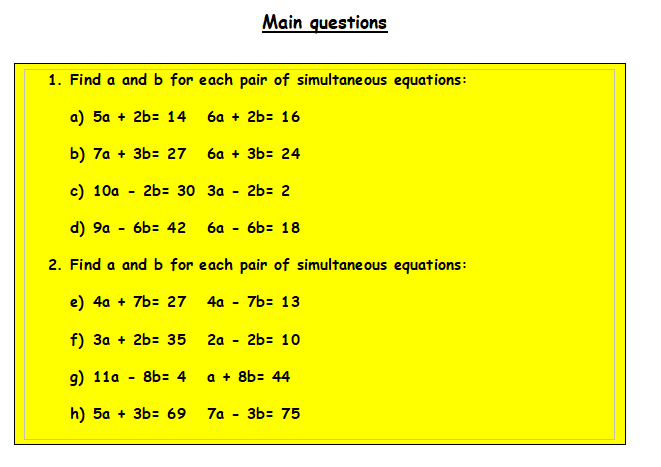
The objective of these free KS4 maths algebra worksheets is to help pupils solve simultaneous equations. It’s a simple layout, with starter, main and extension activities.
The starter has negative number questions and solving simple linear equations. The difficulty is staggered in the main bit. The extension is a worded simultaneous equation.
Three-part GCSE lesson
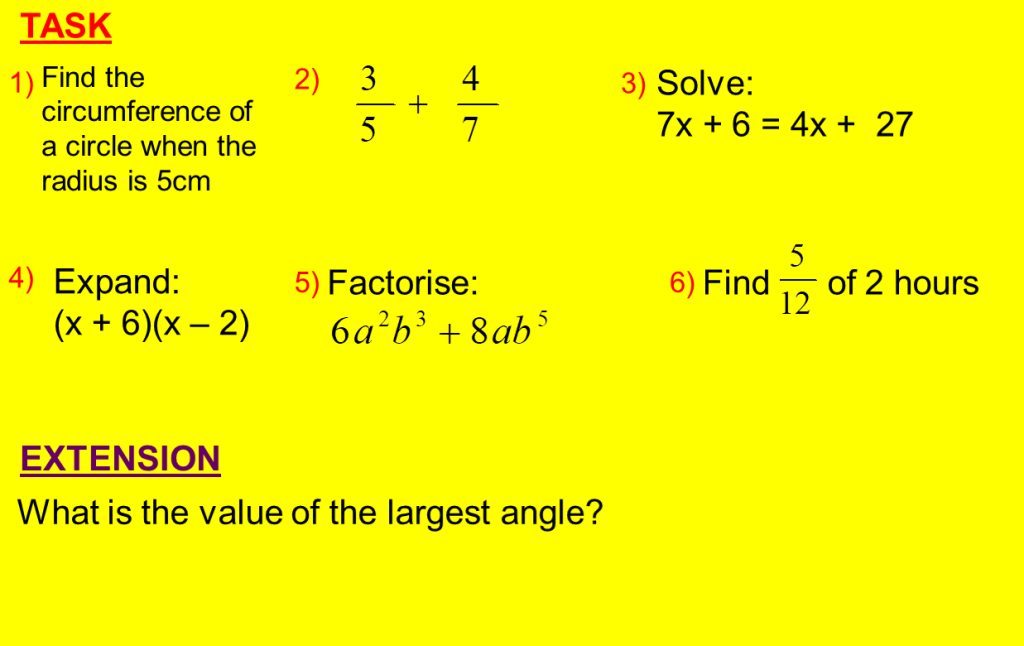
This three-part lesson, aimed at grade 5-6, features a starter with questions to recap and consolidate previous learning.
Streaker at the cricket KS4 worksheet
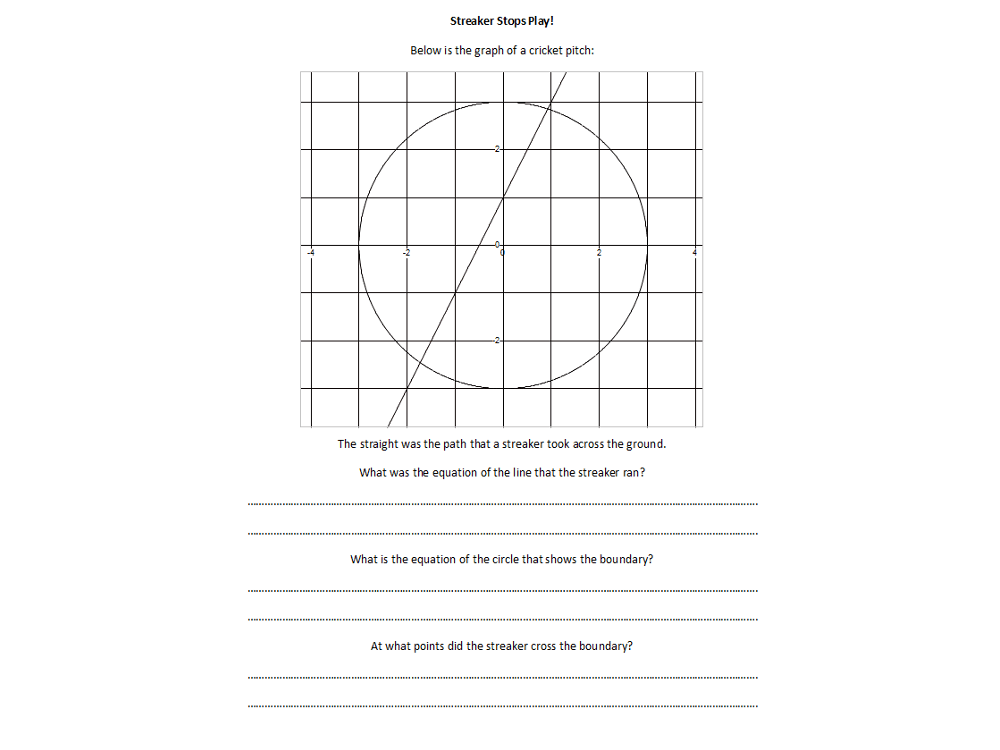
Find the equation of the line and the circle, then calculate the points where the streaker crosses the boundary in this humorous set-up.
Quadratic simultaneous equations questions
How to solve quadratic simultaneous equations
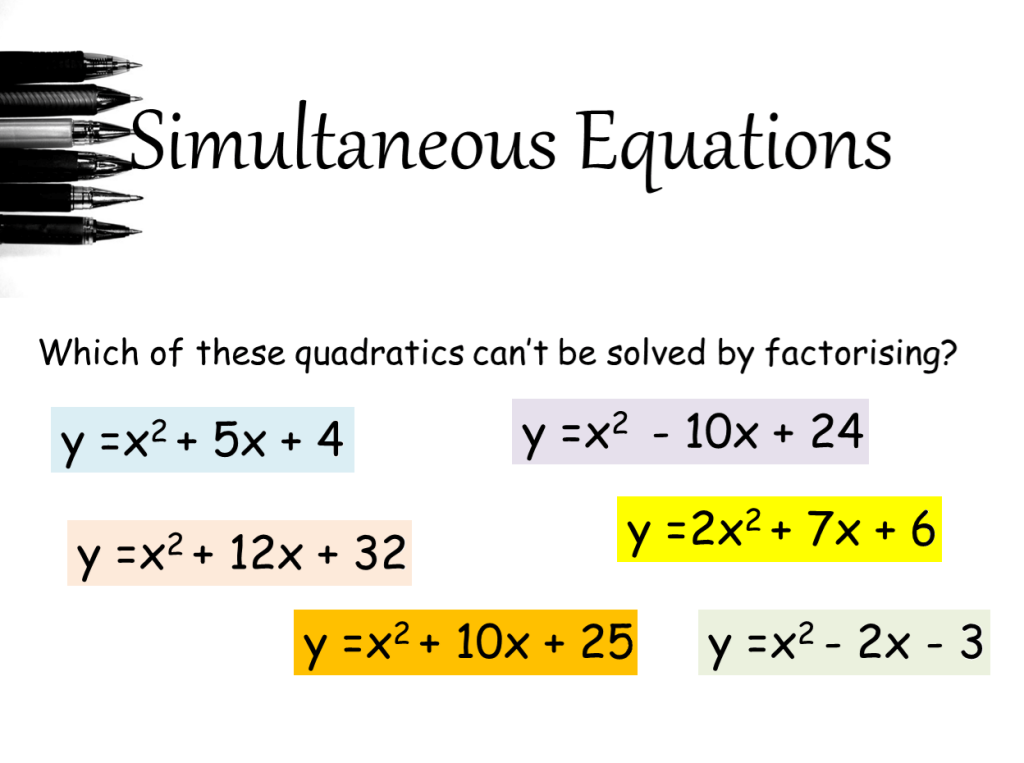
This is a walk-through of how to solve simultaneous equations where one is linear and the other is quadratic. There is also a starter activity that gets students to practise factorising.
Browse our round-up of factoring quadratics worksheets.
Three-part quadratic KS4 lesson
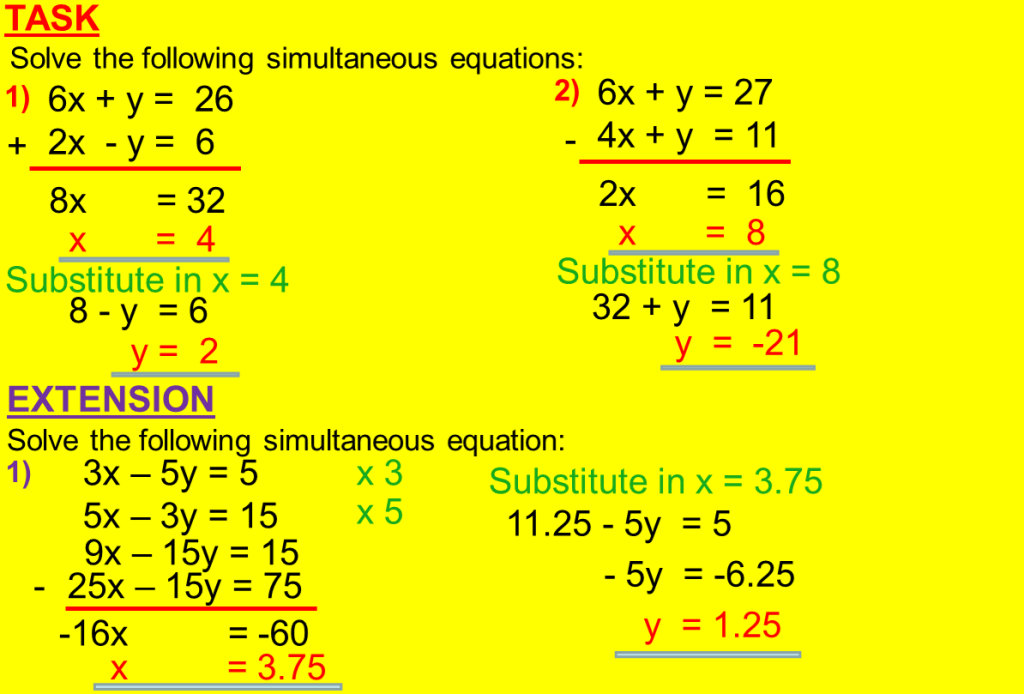
This is a three-part lesson on solving quadratic simultaneous equations, pitched at grade 8-9. The starter recaps solving simultaneous equations. There is a mini-plenary and exam question plenary idea embedded. Answers are provided throughout.
There’s also a similar three-part lesson on solving simultaneous equations where the coefficients of one variable is the same, aimed at grade 5-6. The starter recaps work on solving equations. There is a mini-plenary and plenary, plus answers.
Linear simultaneous equations questions
Exploding linear and non-linear equations for KS4
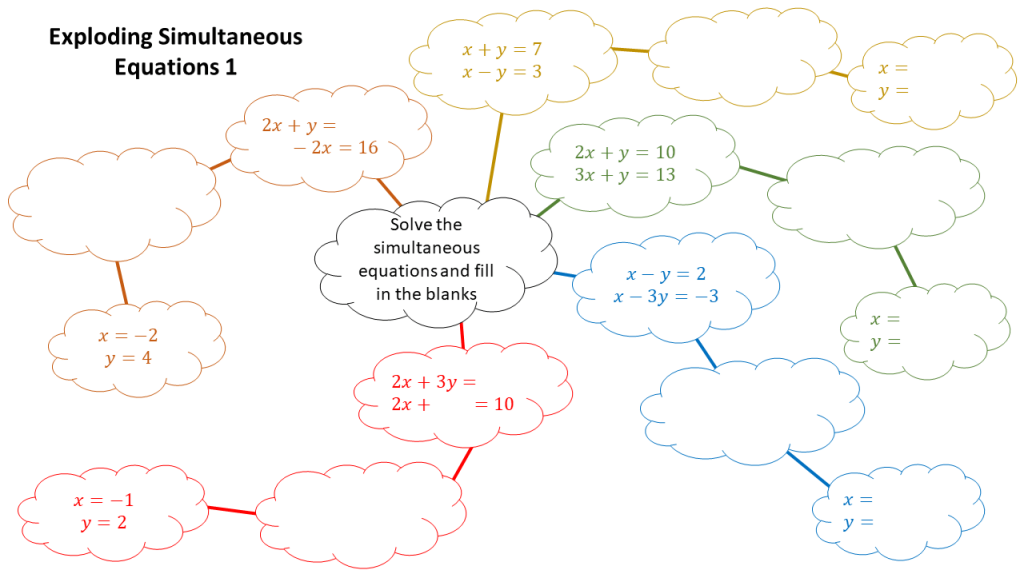
This is a set of six sheets of increasingly difficult simultaneous equations designed to make students think and discuss how to work through their solutions by giving them different parts of the process.
They include simultaneous equations that involve a linear and a non-linear equation. This is designed to stretch at GCSE or could be used at the start of A level.
Tarsia puzzle
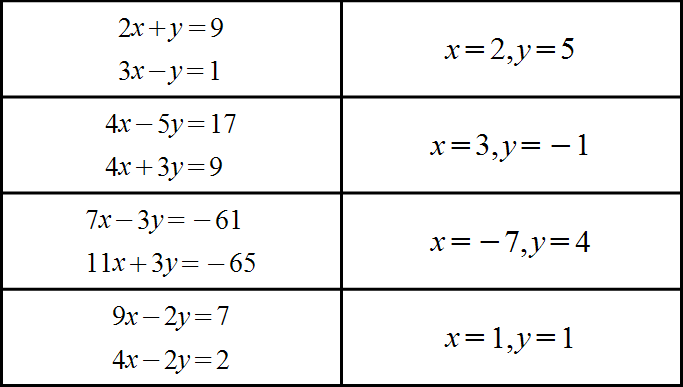
Solve pairs of linear simultaneous equations to put a Tarsia puzzle together – this is good for group work.
Correcting errors worksheet
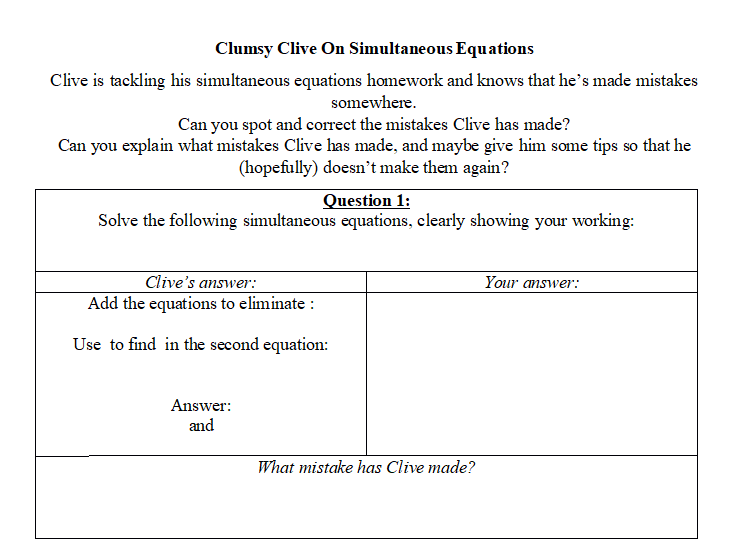
Clumsy Clive is tackling simultaneous equations homework but is making errors. There are three sets of linear simultaneous equations for students to correct and a linear/quadratic to look at.
Graphical simultaneous equations questions
Solve equations graphically with the cover-up method
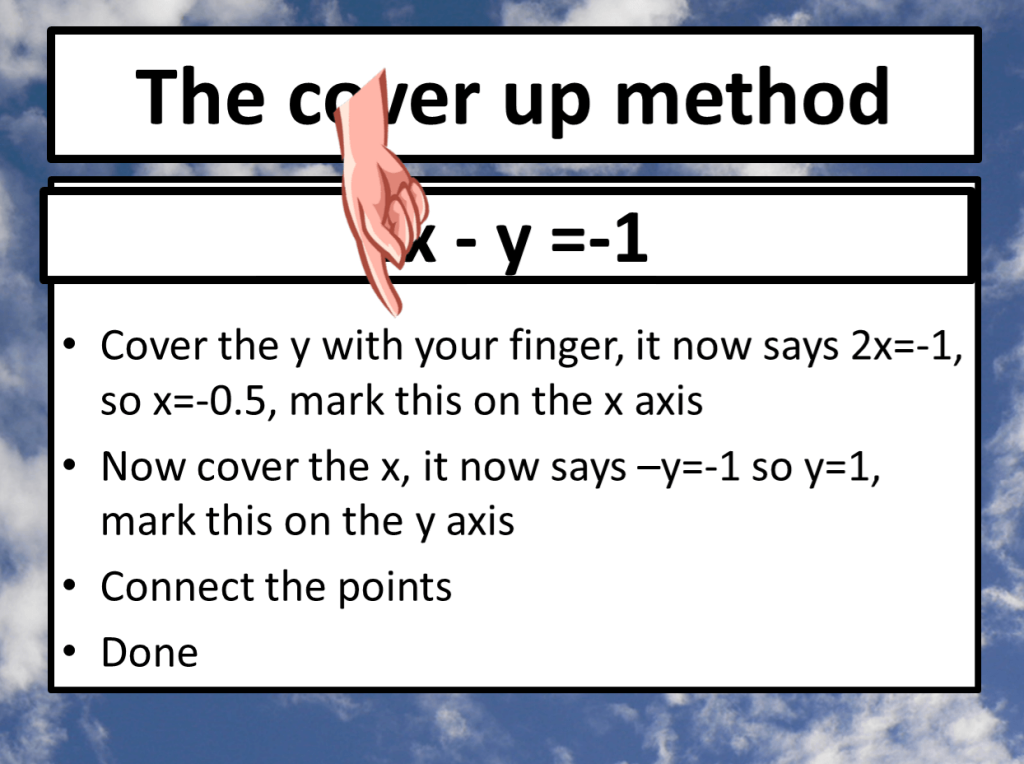
This free PowerPoint shows the graphical methods for solving simultaneous equations using the cover-up method.
Solving equations graphically KS3 worksheet

This free solving simultaneous equations graphically KS3 worksheet features questions on solving simultaneous equations in three sections.
Section one is two linear equations, section two is a quadratic and y=n, and section three is the extension which is a quadratic and y=mx+c.
There is a RAG table for students to mark their progress and this can be amended depending on how far you want to go. Students will need to plot graphs and estimate solutions as not all are integers.
How to solve simultaneous equations graphically
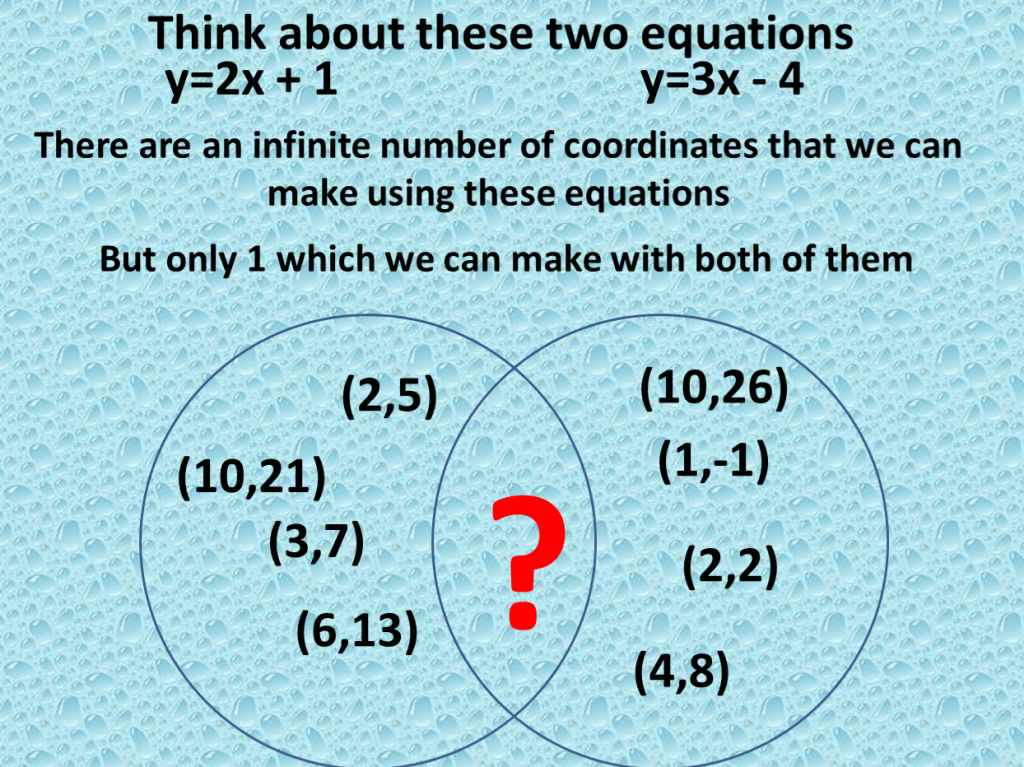
This free PowerPoint activity has a couple of simple slides showing what we mean by solving simultaneous equations, and how to solve them graphically.
There are some questions and answers at the end. It assumes students can plot y=mx + c style equations.
Simultaneous equations graphically PowerPoint and worksheet
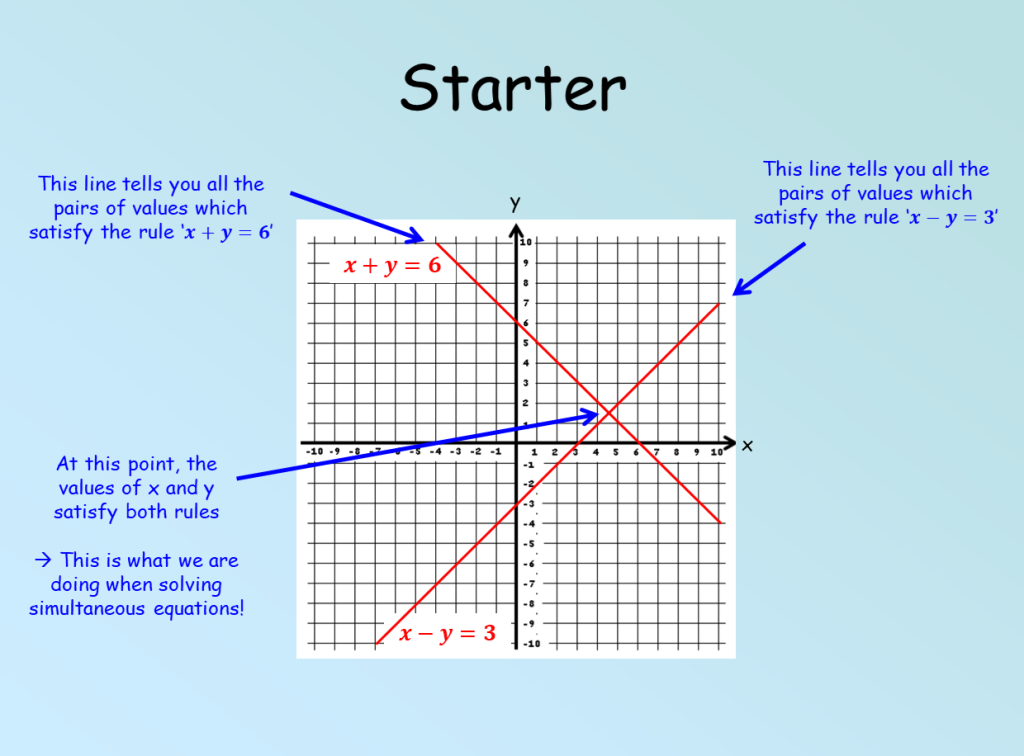
This lesson will show students how plotting two linear equations in x and y allows them to solve simultaneous equations.
The PowerPoint has a full explanation as the starter and there is a sheet of questions for students to practice.
Before doing this task they should have covered algebraic versions of simultaneous equations, as well as linear graph plotting.
Real-world example worksheet
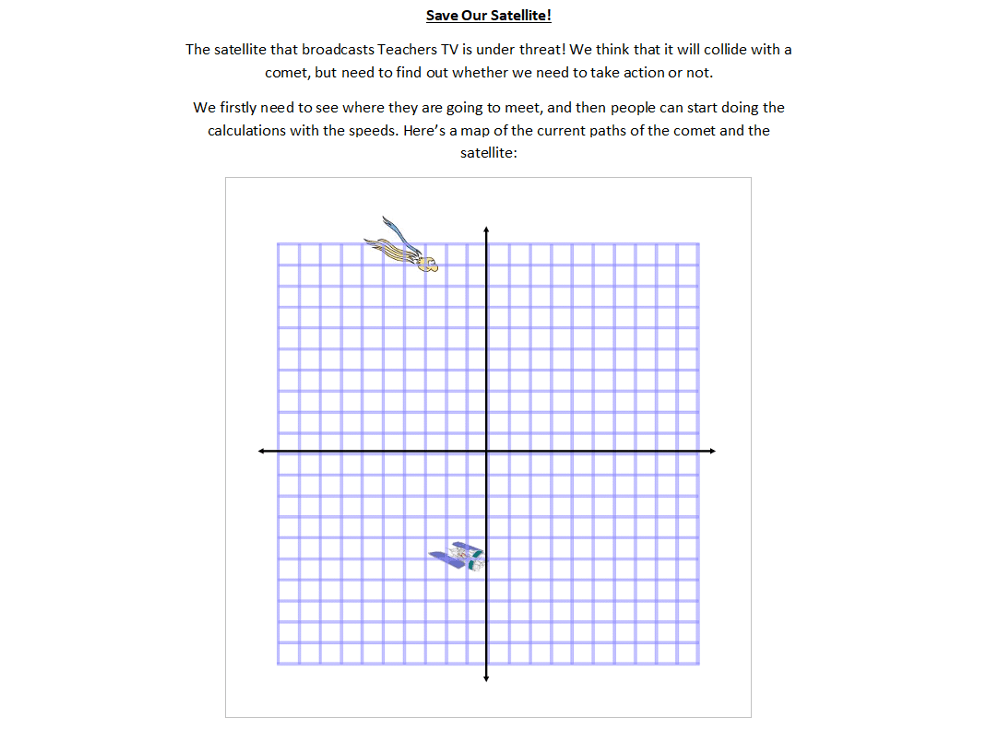
This free exercise shows a real-life example of where you might solve simultaneous equations graphically. Students have to plot to linear graphs and find the point of impact.
Using graphical solutions worksheet
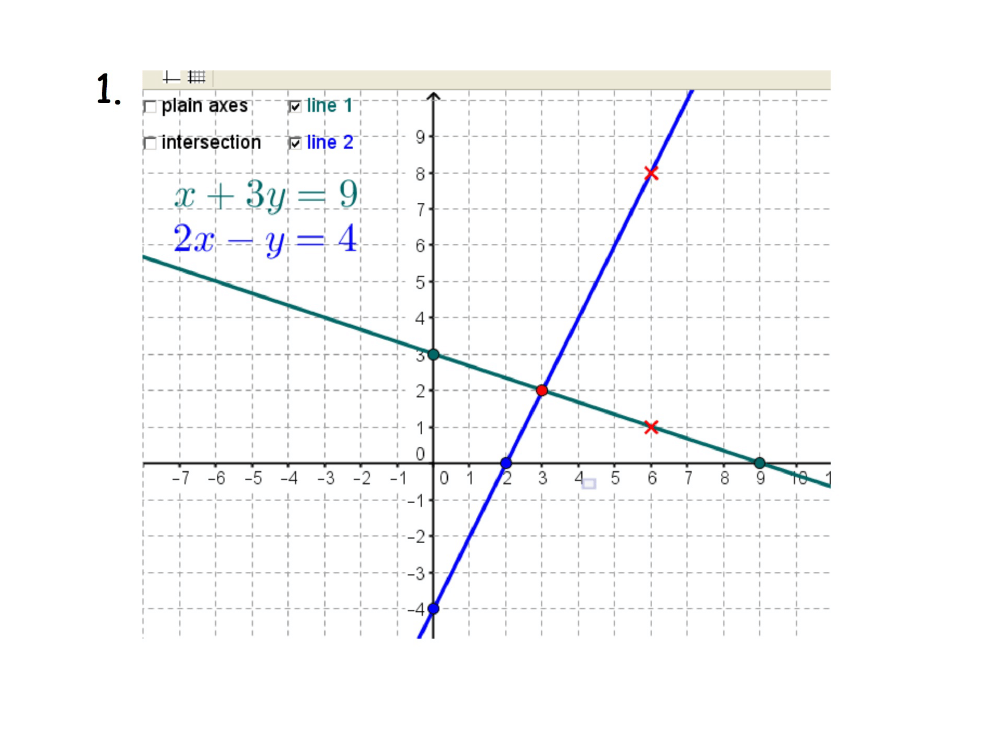
This free worksheet features 12 simultaneous equation questions for students to solve graphically. Answers are included.
Trending
Simultaneous equations and graphs lesson
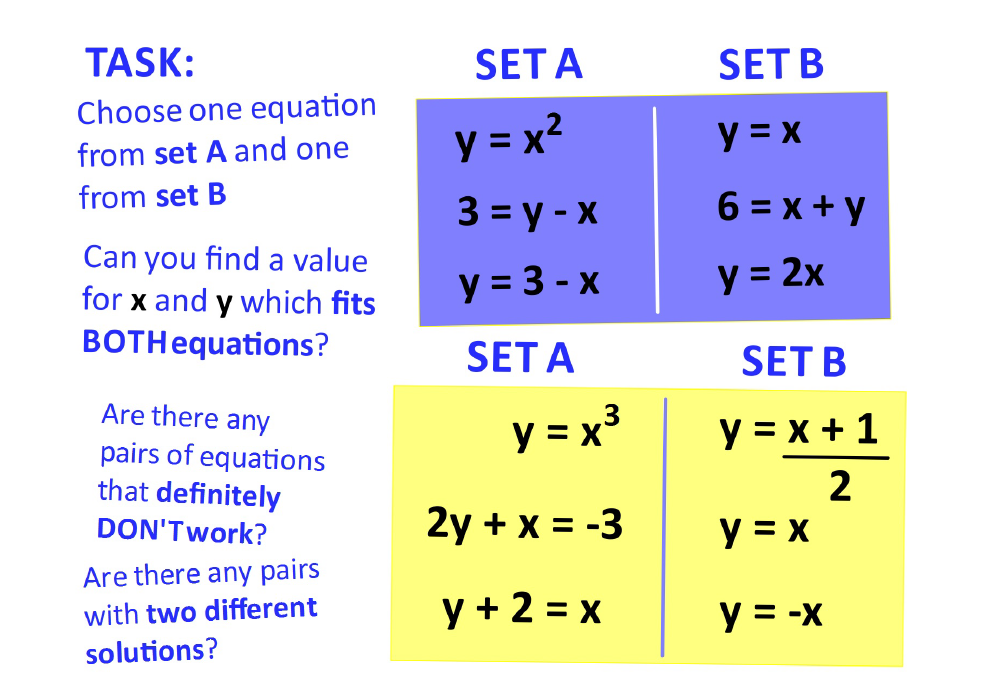
This full lesson introduces solving simultaneous equations using graphical methods.
The starter is a kinaesthetic activity where pupils order themselves according to the value of the expressions they are holding (answers and values to substitute are shown on the board).
For the main activity they pick out graphs to find pairs of solutions to (at first by trial and error) – which later they draw and solve graphically.
More simultaneous equations questions
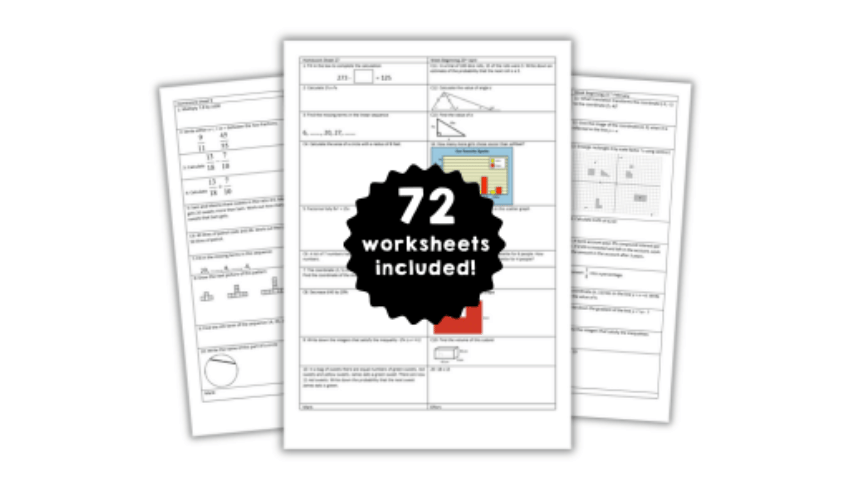
As part of this free Year 9 maths worksheet collection there are questions on simultaneous equations, among many other topics.
Graded worksheet
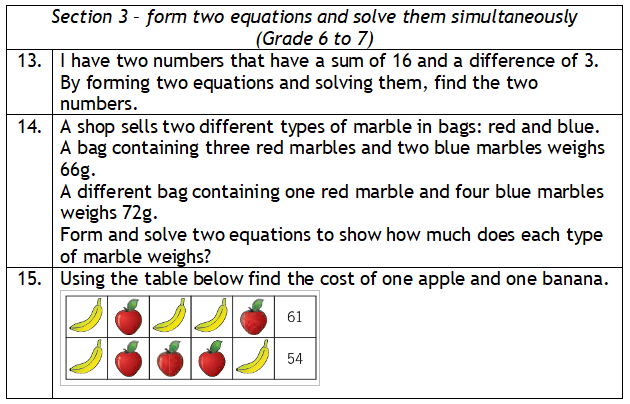
This free resource has three sections with differing levels of difficulty on solving simultaneous equations by elimination. It’s nothing fancy – just a load of questions (and answers).
McDonald’s food activity
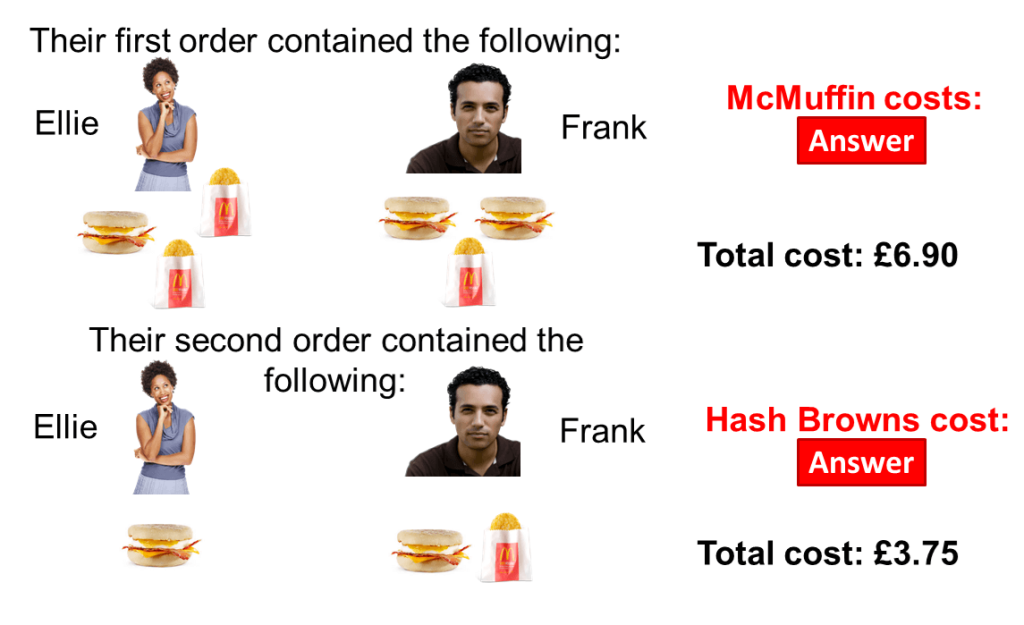
Use this free simultaneous equations PowerPoint to calculate how much each person must pay based on their orders at McDonald’s.
Picture-based puzzles introduction
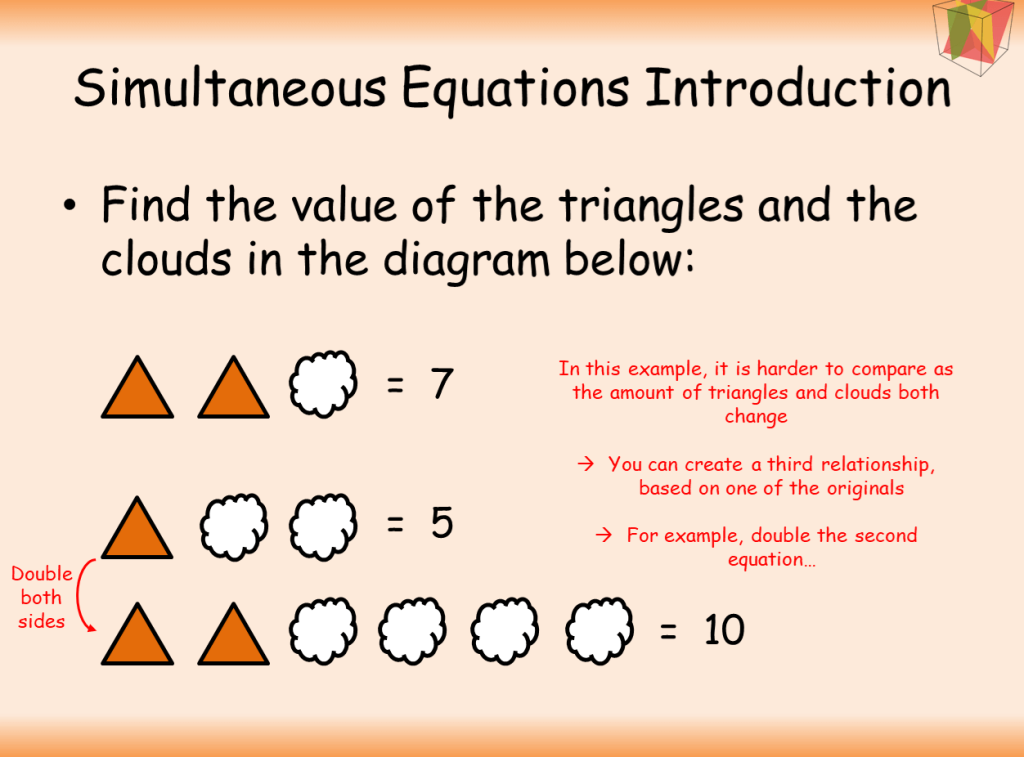
This lesson is intended as an introduction to simultaneous equations, where students solve picture-based puzzles without using formal algebra.
The idea is that the following lesson they can look at equations given algebraically and see how it is effectively the same thing.
Introduce simultaneous equations using area
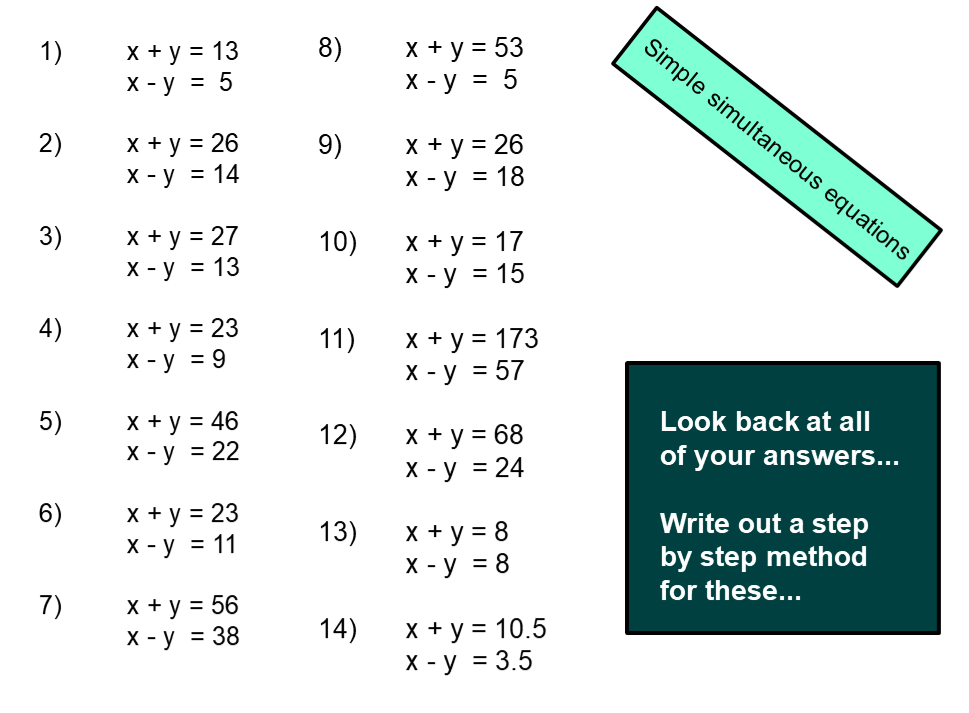
This free lesson uses area to introduce simultaneous equations. Students move from informal to formal solutions effortlessly.
This was inspired by the NCETM departmental workshops, and two of their documents are included in the download with worksheets and lesson plan.
When to add and when to subtract simultaneous equations
When using the elimination method to solve simultaneous equations, students can often be unsure whether to add or subtract. Colin Foster is here to help…
The difficulty
Look at the four pairs of simultaneous equations below:

Which ones could you solve by adding the equations together? Which ones could you solve by subtracting one equation from the other? Students may be unsure and not know how to decide.
The solution
Don’t worry about solving the equations just yet. All I want you to do is simply add together each pair of equations. And also subtract each pair of equations. See what you get.
By adding, students should obtain the following:

And by subtracting the second equation from the first equation:

Students may not bother to write the 0? and 0? where there are no ? and ? terms, and this is fine.
They may make errors, particularly when subtracting the negative terms – so for the subtractions, they may end up with the wrong answers shown in red below:

Writing out the difficult subtractions explicitly may help:

When does adding eliminate an unknown?
This happens when two terms are equal in magnitude, but of opposite sign
(e.g., 2? and –2?).
When does subtracting eliminate an unknown?
This happens when two terms are equal in magnitude, and of the same sign
(e.g., –3? and –3?).
Sometimes, it can help if students remember the following: When the Signs are the Same you Subtract.
Can you find a pair of equations where either adding or subtracting will lead to elimination of one of the unknowns?
An example would be 3? + 2? = 11 and 3? – 2? = 7.
The solution to all of these pairs of equations is ? = 3, ? = 1.
Checking for understanding
To assess students’ understanding, ask them to create four pairs of simultaneous equations of their own, two of which can be solved by adding the equations, and two of which can be solved by subtracting the equations.
They should label clearly which are which.
Colin Foster (@colinfoster77) is a Reader in Mathematics Education in the Department of Mathematics Education at Loughborough University and has written numerous books and articles for mathematics teachers; for more information, visit foster77.co.uk.
Download 100+ problem-solving questions in our KS3 maths worksheets pack from White Rose Maths.








